False Water Cobra
When travelling in the Pantanal, the last thing you expect to see is a hooded cobra - with its head raised off the ground and looking back at you. Well, it's not a real cobra but it looks a lot like the real thing.
The false water cobra (FWC) is a neotropical species inhabiting southern Brazil, eastern Bolivia, Paraguay, and northern Argentina. The snake's name stems from its habit of flattening the ribs in its neck to form a cobra-like hood when threatened. This increases its apparent size in an effort to appear more intimidating. However, unlike a true cobra, the FWC stays in a horizontal position (raised slightly off the ground), rather than standing vertically. In recent years, the FWC has also become a popular pet for snake enthusiasts across North America and Europe. The snake is considered mildly venomous, but isn't dangerous and usually isn't looking to attack anyone - unless they're is silly enough to chase after it and grab it.
 Video: How NOT to pick up a False Water Cobra
Video: How NOT to pick up a False Water Cobra
The FWC is a large colubrid - from the genus Colubridae. The inclusion of the name gigas, Latin for ''giant, as part of it's taxonomic name (Hydrodynastes gigas) signifies its size in comparison to other colubrids. The FWC can reach 2.5 m (8 ft) in length - although the average size seems to be between 1.5 and 2 metres (5 to 7 ft) - with females being slightly bigger and heavier than the males. Colubrids are the world's largest genus of snakes - consisting of around 1,900 species spread across all continents except Antarctica. Only a third of these are venomous - and those which are, are rear-fanged. This means they generally have little venom to inject, and need to chew the venom into their prey - instead of injecting it in the initial bite. Hence, although the FWC's venom has similar toxicity to that of a rattlesnake, it simply lacks the quantity and delivery mechanism to pose a significant danger to humans. That being said, the bite can hurt, and there's always the potential for people to have an allergic reaction - so it's best to treat them with respect, and keep a safe distance. If bitten, the usual reaction is localised swelling, pain, and itching.
The snake is olive-green, brown or tan in colour, with arched black banding along the length of the body. The dorsal area immediately behind the head is often a plain brown colour without markings. The snake's scales are smooth - hence it's alternative name, the Brazilian Smooth Snake. The snake also has large circular pupils allowing good daytime vision.
The FWC is a large colubrid - from the genus Colubridae. The inclusion of the name gigas, Latin for ''giant, as part of it's taxonomic name (Hydrodynastes gigas) signifies its size in comparison to other colubrids. The FWC can reach 2.5 m (8 ft) in length - although the average size seems to be between 1.5 and 2 metres (5 to 7 ft) - with females being slightly bigger and heavier than the males. Colubrids are the world's largest genus of snakes - consisting of around 1,900 species spread across all continents except Antarctica. Only a third of these are venomous - and those which are, are rear-fanged. This means they generally have little venom to inject, and need to chew the venom into their prey - instead of injecting it in the initial bite. Hence, although the FWC's venom has similar toxicity to that of a rattlesnake, it simply lacks the quantity and delivery mechanism to pose a significant danger to humans. That being said, the bite can hurt, and there's always the potential for people to have an allergic reaction - so it's best to treat them with respect, and keep a safe distance. If bitten, the usual reaction is localised swelling, pain, and itching.
The snake is olive-green, brown or tan in colour, with arched black banding along the length of the body. The dorsal area immediately behind the head is often a plain brown colour without markings. The snake's scales are smooth - hence it's alternative name, the Brazilian Smooth Snake. The snake also has large circular pupils allowing good daytime vision.
False water cobra winding its way through the Pantanal wetlands. Photo: Andrew Mercer.
Related Links
Alternate Name
Brazilian smooth snake

Scientific Name
Hydrodynastes gigas

Local Name
Jaracucu OR
Surucucu-do-pantanal

Description
Large snake reaching 2.5 m. Brown with black arched or cross-hatch markings. Displays flattened cobra-like head if threatened.
Behaviour
FWC's are semi-aquatic. They spend most of their life on solid ground and grasslands - but are adapted to pass through the Pantanal wetlands environment and survive the seasonal flooding. They feed primarily on fish, frogs, tadpoles and other aquatic amphibians. The snakes are inquisitive and very active through the day, which they spend foraging. They climb, burrow, and swim - going anywhere there's the chance of a good meal. When prey is caught, it is subdued by a combination of envenomation and constriction.
However, when biting out of aggression or defence, FWCs will attempt to conserve their venom - since wasting venom on something that isn't food has little benefit for the snake. Instead they will use a slashing motion to cause a painful wound which is hopefully enough to make any potential predator think twice.
Breeding
These snakes are oviparous (egg laying) - laying as many as 40 eggs at a time. The hatchlings are about 40 cm (15 inches) long and are brightly banded - although these bands disappear as the snakes mature. Like most snakes, the hatchlings need to immediately fend for themselves.
Quick Facts:
- Although regarded only as "mildly venomous", the FWC's venom has potency similar to that of a rattlesnake. The mild impact of its bite is due to the smaller venom quantities and a less effective delivery mechanism.
- The FWC plays an important ecological role, helping control the number of small rodents across it's range.
- This snake's preferred habitat close to water contributes to its common name of false water cobra. It's coloration is also very similar to the true water cobras of southern and central Africa.
- The FWC is a colubrid, belonging to the taxonomic genus Colubridae. True cobras come from a different family of snakes, called Elapidae).
- Although the population is considered stable, an increasing number of snakes are now being removed for the pet trade.



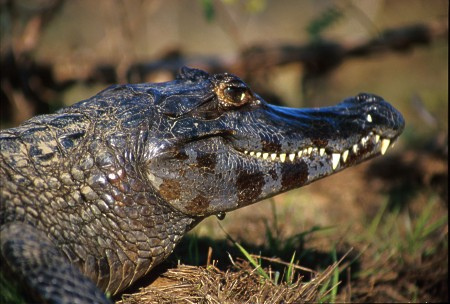
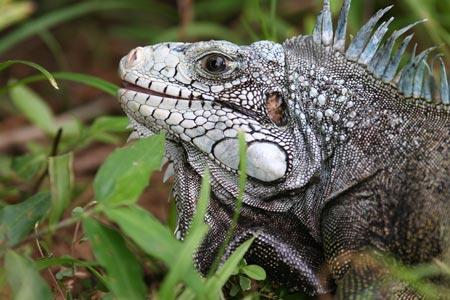
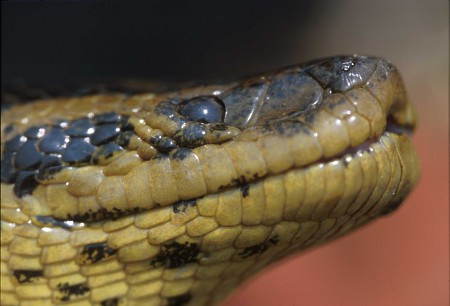


Banner image: False Water Cobra against black background (Shutterstock/NatalieJean).
False water cobra crossing the Pantanal (Andrew Mercer);
Footer images: Jacaré; Anaconda (Andrew Mercer); Green Iguana (Shutterstock/Stephanie Rousseau)
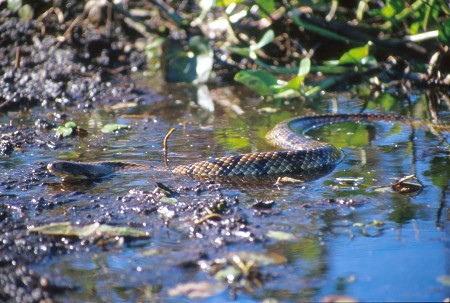
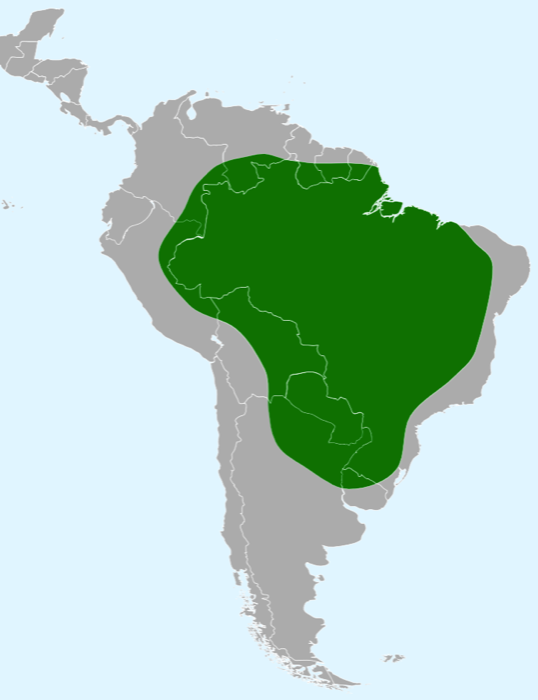
Pantanal Escapes